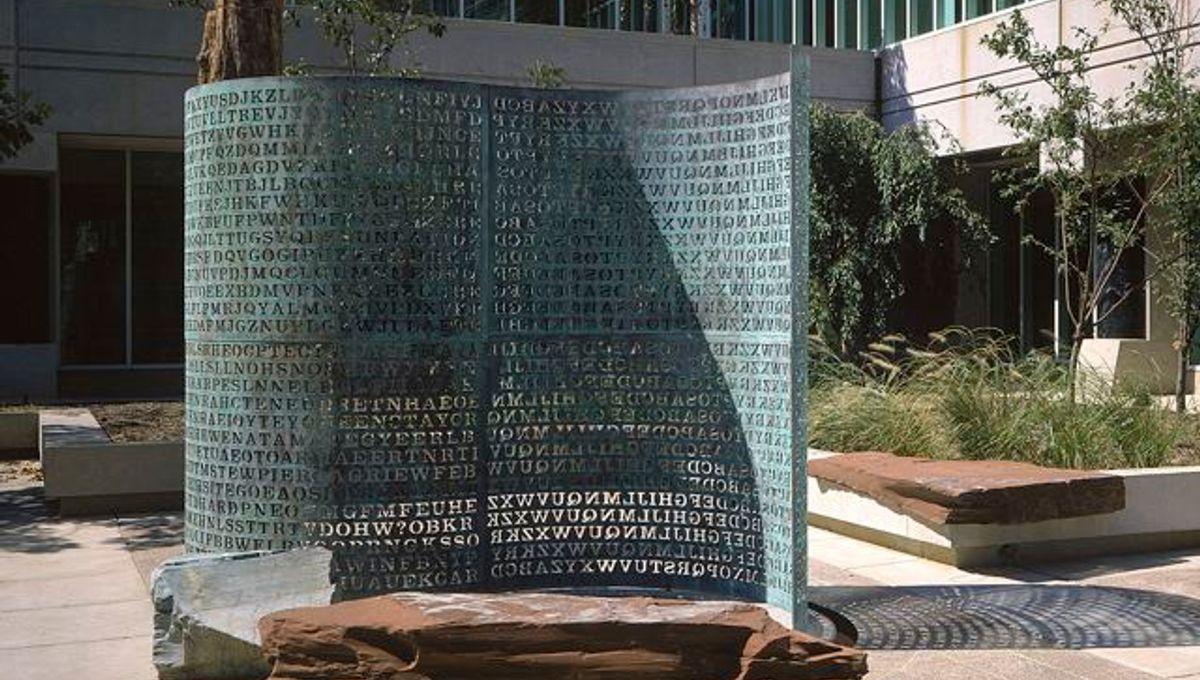Sleuths Uncover Hidden Message In CIA’s Mysterious Kryptos Sculpture After 35 Years

Sleuths Uncover Hidden Message In CIA’s Mysterious Kryptos Sculpture After 35 Years
For nearly 35 years, a hidden message has lurked in plain sight on a sculpture outside the cafeteria of the CIA’s headquarters in Langley, Virginia. Now, a pair of researchers claim they may have found the decoded message – although many insist the puzzle is far from solved.
The rest of this article is behind a paywall. Please sign in or subscribe to access the full content. Created by American artist Jim Sanborn, Kryptos is a sculpture made of a large sheet of copper, curled into an S-shape, across which hundreds of jumbled letters are cut out. Within this jumble are several cryptic messages that have been scrambled using different ciphers. The challenge is to decode them and reveal the underlying messages, or the “plaintext”, as it is known in cryptography. Since its installation in November 1990, three of its messages (K1, K2, and K3) have been solved – if you want to know more about those ones, check out our explainer here. However, the fourth (K4) has long remained a mystery, earning it the reputation as one of the world’s most famous unsolved codes. Sanborn has since revealed there’s another layer, known as K5, which can only be worked out after K4 has been cracked. Just recently, a new twist in the story emerged. In early September 2025, Sanborn was in the final stages of auctioning off the puzzle’s K4 solution when an unexpected hitch in the plan emerged. Two independent journalists and writers, Jarett Kobek and Richard Byrne, discovered archival materials related to K4 while snooping around the Smithsonian Institution's Archives of American Art. Among a mess of files and documents, they reportedly stumbled across the K4 plaintext. A significant amount of investigative sleuthing went into obtaining the plaintext, but it was ultimately solved by mishandled paperwork, not cryptographic wizardry. “There’s no way on Earth that this is a cryptographic solve, and we have not claimed that,” Kobek told Zona Motel. “But this is, you know, it’s not as if Rich [Byrne] went in and the people at the Smithsonian brought him a box, and he opened the box, and at the bottom of the box, there was just one piece of paper that had the plaintext of K4, and then above it, it said ‘K4’ with an arrow pointing to it. Rich had to do a lot of work,” he added. For now, the secret will stay under wraps. The Smithsonian immediately sealed the archives until 2075, citing the protection of Sanborn's intellectual property. Meanwhile, the two researchers involved have no intention of releasing the plaintext, plus RR Auctions, the auction house handling the sale, has warned they could face legal action if they chose to do so. Some might believe that this is a somewhat sour or anticlimactic end to this saga. However, the researchers argue that if computers and artificial intelligence (AI) couldn’t crack K4 decades ago, it was never likely to be solved by humans using conventional methods. “The conclusion that I came to is that if people much smarter and much better than me at this were working on computers that were exponentially faster than they were when people were unable to solve this at the end of the ‘90s. Realistically speaking, this is not necessarily something that’s ever going to be solved by cryptanalysis or STEM or math,” Kobek added, speaking to Zona Motel. It could also be said that the mystery is still at large. RR Auctions contends that while Kobek and Byrne may now know the plaintext, they do not know the method Sanborn used to encode K4, nor his explanation of the relationship between K4 and K5. As such, the puzzle, they argue, remains unsolved. "If they don't have the method, it's not solved," Elonka Dunin, one of the world's leading Kryptos researchers, said in a statement.


